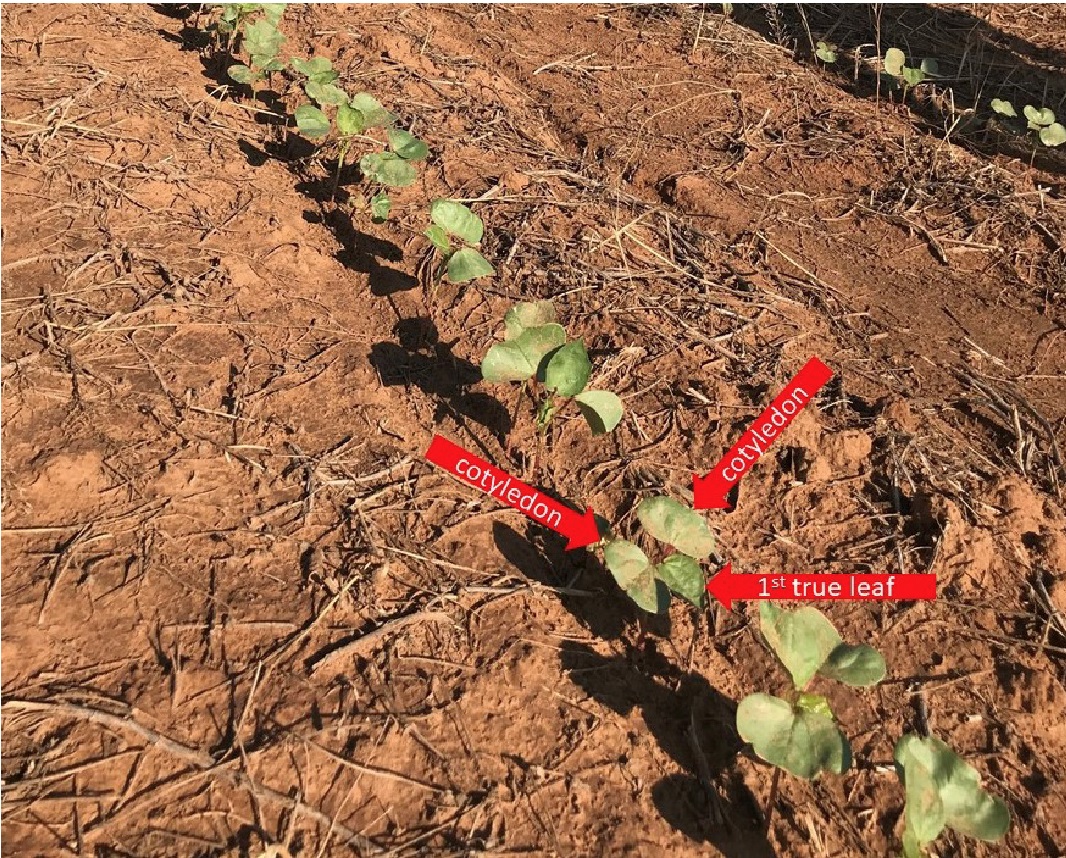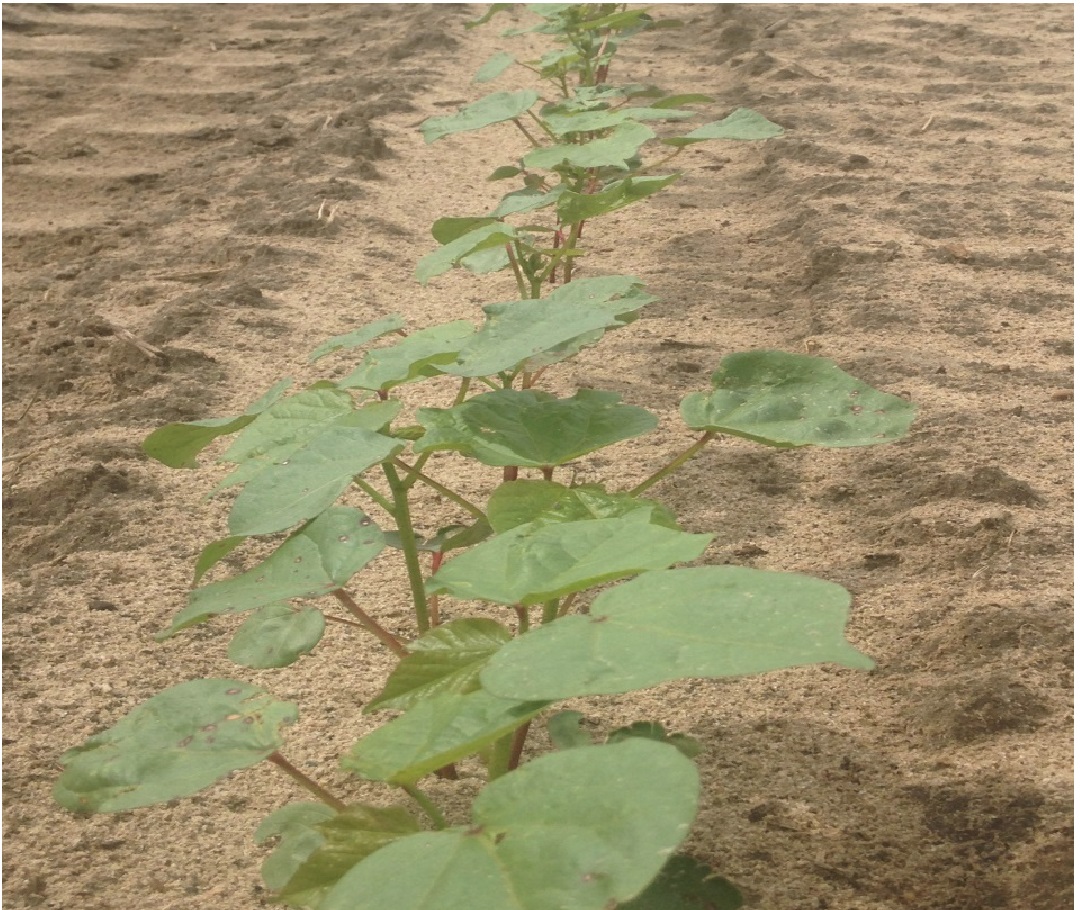Considerations for Cotton Planting and Early Season Growth
The first two to three weeks of the cotton season is a critical period to monitor growth and development of the crop. It’s key to understand the interactions between environmental conditions, pest pressure and crop protection products, and how these factors impact the progress of the crop. Regardless of variety selection or area of the state, avoiding maturity delays is key to ensure an optimal fruiting window and fiber quality, as well as a timely harvest.
Two of the primary drivers behind the growth of cotton throughout the season are water and temperature. Development of the crop is often predicted or monitored through the use of heat units, referred to as DD60s for cotton. Daily heat unit accumulation in cotton is based on daily high and low temperatures, with a certain amounts of heat units required to get to major benchmarks in a crop’s development, such as squaring, flowering and open boll. Heat units will be discussed in more detail in an upcoming fact sheet.
While warm days certainly signal the onset of planting season, be careful to monitor overnight lows, as even daytime highs of 90 F can result in slow growth rates if overnight lows drop to 50 F or less. Time planting around optimal temperatures, which are high’s in the low to mid 80’s or higher, overnight lows in the 60’s or above, to ensure that the plant accumulates the needed daily DD60s, or heat units, for rapid growth and emergence. The general rule is 50 to 60 heat units are required after planting to achieve emergence and accumulating six to 10 heat units per day during the five- to seven-day period after planting is considered favorable conditions.
In some long season areas of Oklahoma, moisture drives planting decisions more so than temperature, particularly for dryland producers. Although cotton doesn’t require much water for adequate growth early in the season, planting into good soil moisture is essential to ensure rapid and uniform germination and emergence. It is more beneficial to plant into a moist seed bed where water can be readily imbibed by the seed, rather than into a dry seed bed and waiting until there is enough moisture to initiate germination. Planting into a moist seed bed will decrease the chances of uneven or delayed stand establishment. In dryland scenarios, the combination of ideal soil moisture and temperatures in some years is rare. Thus, a balance must be met between these two factors to provide the best possible conditions for early season growth.
Conditions that favor uniform emergence and rapid early season growth are not only critical to establishing a uniform stand, they also will mitigate additional stresses to which the seedlings will be exposed. After emergence, there is a need to maintain rapid growth and minimize factors that will inhibit the crop’s development. Due to cotton’s lack of early season competitiveness, eliminating weeds that out-compete the crop for water, sunlight and nutrients is a priority. Many of the at-plant and post-emergence herbicides used in cotton result in slight injury to seedlings and young plants. While this injury alone is rarely severe enough to be detrimental, and the weed control that is achieved is more valuable, care must be taken not to compound stress. This consideration primarily comes up when early season insect pests, specifically thrips, are present. Thrips feed on the leaves of young cotton plants, and if not controlled, will stunt growth and result in delayed maturity. Cotton is most susceptible to thrips at early growth stages, from the cotyledon stage to the four- to five-leaf stage. Warm temperatures and adequate soil moisture promote rapid growth that aid in the plant’s ability to grow out of these stressed conditions, while cool temperatures or herbicide injury prolong the amount of time the plants remain susceptible to thrips. Actively scouting for thrips during the early part of the season is recommended, especially if other hosts for thrips are nearby or there’s a history or thrips feeding.
Planting treated seed is a commonly recommended practice in Oklahoma to address a variety of early season concerns. For areas prone to thrips infestations, an in-furrow granular or liquid insecticide can be used to provide a longer window of control than a seed treatment alone. If seed treatments are used alone and an over-spray of an insecticide is deemed necessary after scouting, an application around the first true leaf stage (Figure 1) is ideal for overlapping the control provided by seed treatments and will typically allow the plants to reach the four- to five-leaf stage (Figure 2). This is the point the crop has reached a size that is no longer susceptible to a significant injury. Often, this application may accompany an early-post herbicide application; however, be sure to check the label to ensure the insecticide selected is approved for tank mixing with the herbicides being applied. There are numerous options for in-furrow and/or foliar applied insecticides with thrips activity, including products with the active ingredients acephate, dicrotophos, dimethoate, disulfoton, imidacloprid and spinetoram.


Extension Cotton Specialist
